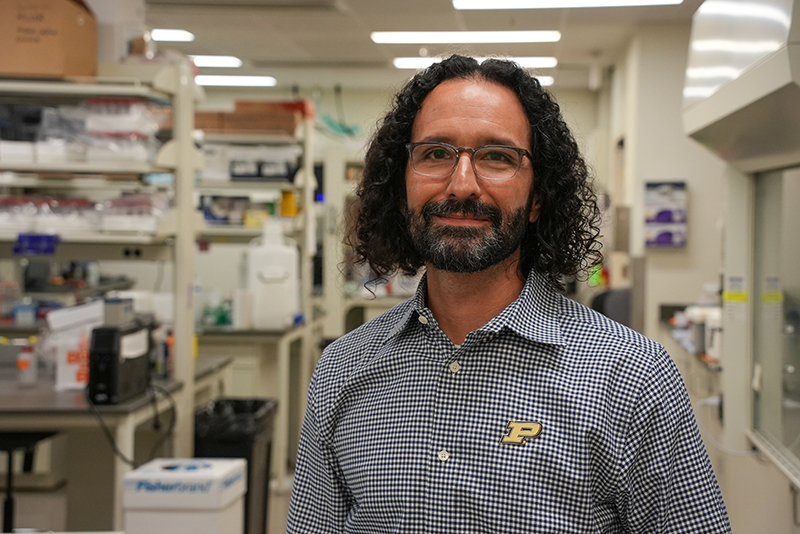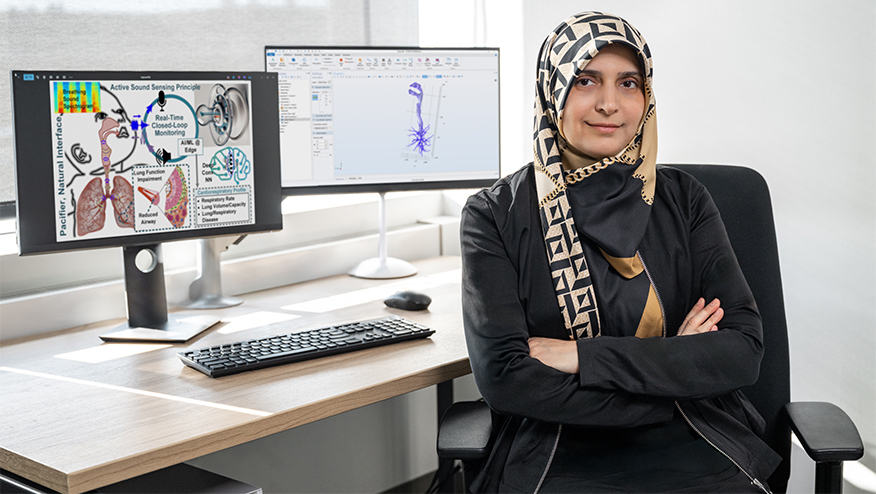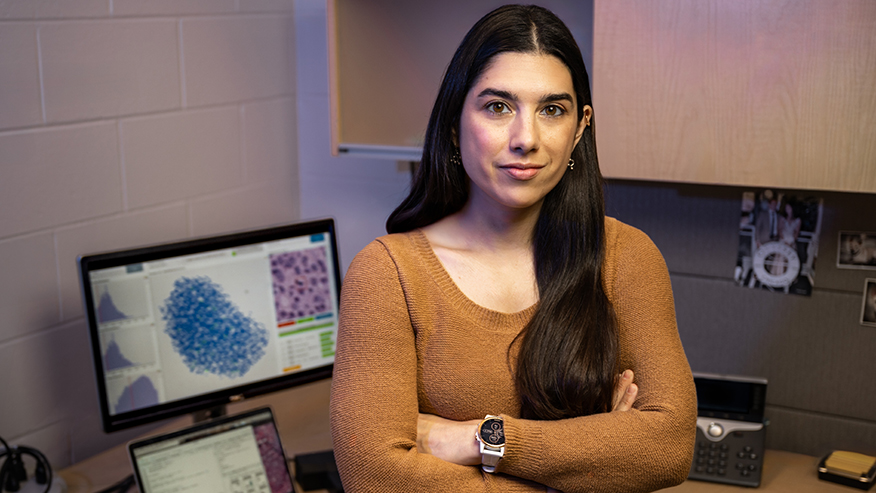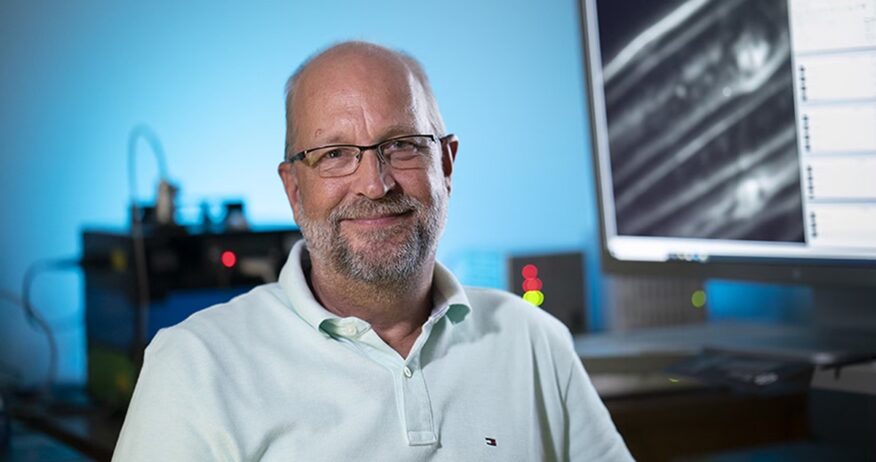Cracking the science of collagen in bones
A Purdue biomedical engineer is changing the way mechanical properties of bone are viewed

Joey Wallace’s work in the Bone Biology and Mechanics Lab at Purdue University in Indianapolis has focused on the role collagen in bone plays in several different disease models. (Purdue University photo/Michael Robb)
INDIANAPOLIS —
For over a century, the science around bones has been rooted only in whatever an X-ray image was able to reveal. Bone research solely focused on mineral content through radiation images, limiting the understanding about many other aspects of bone — collagen, water, fat — which don’t show up on a scan.
Purdue engineer Joey Wallace is fracturing the decadeslong status quo in bone research. His findings may provide unprecedented clarity into the underlying causes of conditions like osteoporosis, diabetes and kidney disease, health concerns that impact millions of Americans.
“People look at bone and they think it’s this static, inert thing that’s just there to let us move, and it’s the muscles, tendons and ligaments that are doing everything,” said Wallace, the biomedical engineering chair and professor at Purdue University in Indianapolis. “But bones are crazy complex.”
Additional Information
Early in his research of skeletal disease and mechanobiology — mechanisms by which cells sense and respond to mechanical signals — Wallace learned that those complex elements of bone weren’t being properly accounted for.
“It became immediately clear to me that some of the changes we were seeing in the mechanical properties of bone as it relates to fracture risk were happening in something that wasn’t being reflected in mineral,” Wallace said. “It wasn’t showing up as changes in bone mass, either, and if it’s not mineral, I knew I had to go down that rabbit hole to find out what it was.”
As Wallace continued to study, he began focusing on collagen in bone.
“I didn’t want to just see the collagen in normal tissues,” Wallace said. “I wanted to quantify it.”
That’s exactly what Wallace did, building a new identification technique around atomic force microscopy — which had previously only been dabbled with observationally — to image collagen in bone tissue. He developed the innovative technique to process bone and dentin samples to expose the underlying collagen, as well as quantify the nanoscale collagen structure. Wallace then used those processes to investigate differences in collagen structure in bone from a model of osteoporosis, differences as a function of tissue type and differences that existed in a model of osteogenesis imperfecta, a disease in which bones fracture easily, often with no obvious cause.
Studying how collagen impacts bone disease was a springboard for Wallace, bringing new data to the forefront and remaining the focus of his research. The newly named dean of the Purdue School of Engineering and Technology continues to untangle the complexities of bone in the Bone Biology and Mechanics Lab, carrying that same intense focus on collagen.
At Purdue University in Indianapolis, Wallace’s bone research has ventured into the role collagen in bone plays in diabetes and kidney disease. When collagen in bone is exposed to heat, it generates a reaction that stimulates advanced glycation end products (AGEs). These AGEs form as cross-links in the collagen structure, inappropriately stiffening the collagen and preventing the normal sliding and ductility of the structure, causing an embrittling effect in bone.
Wallace’s publications on artificially inducing AGEs in bone, the development of a model of diabetes and a model of combined diabetes and kidney disease laid the foundation for a recent Veterans Affairs grant. Awarded last January, that grant has placed Wallace as the principal investigator on a current study focusing on establishing diabetes and kidney disease models within the veteran population.
“Diabetes affects so many Americans,” Wallace said. “Not that other disease models aren’t important, but it’s different from some of my past research. You’re talking about something that impacts 35 to 40 million people versus 25,000 to 50,000, so I’m excited to go in that direction.”
About Purdue University in Indianapolis
Purdue University in Indianapolis is a new, fully integrated extension of the West Lafayette flagship campus, expanding the academic rigor and accessible excellence that Purdue is known for to Indiana’s industrial and technological center. As the only public top 10 university, most trusted university and most innovative university in the state of Indiana, Purdue is focused and committed to strengthening its presence in the capital city. Purdue University in Indianapolis will reimagine a collaborative platform that connects students, faculty and local businesses to promote breakthrough discoveries and create a new and direct talent pipeline. Realignment of the existing IUPUI partnership is expected to be completed by the start of the fall semester in 2024. Learn more about Purdue’s latest giant leap at https://www.purdue.edu/campuses/indianapolis/.
Writer/Media contact: Derek Schultz, dcschultz@purdue.edu
Source: Joey Wallace, jmwalla@iupui.edu



